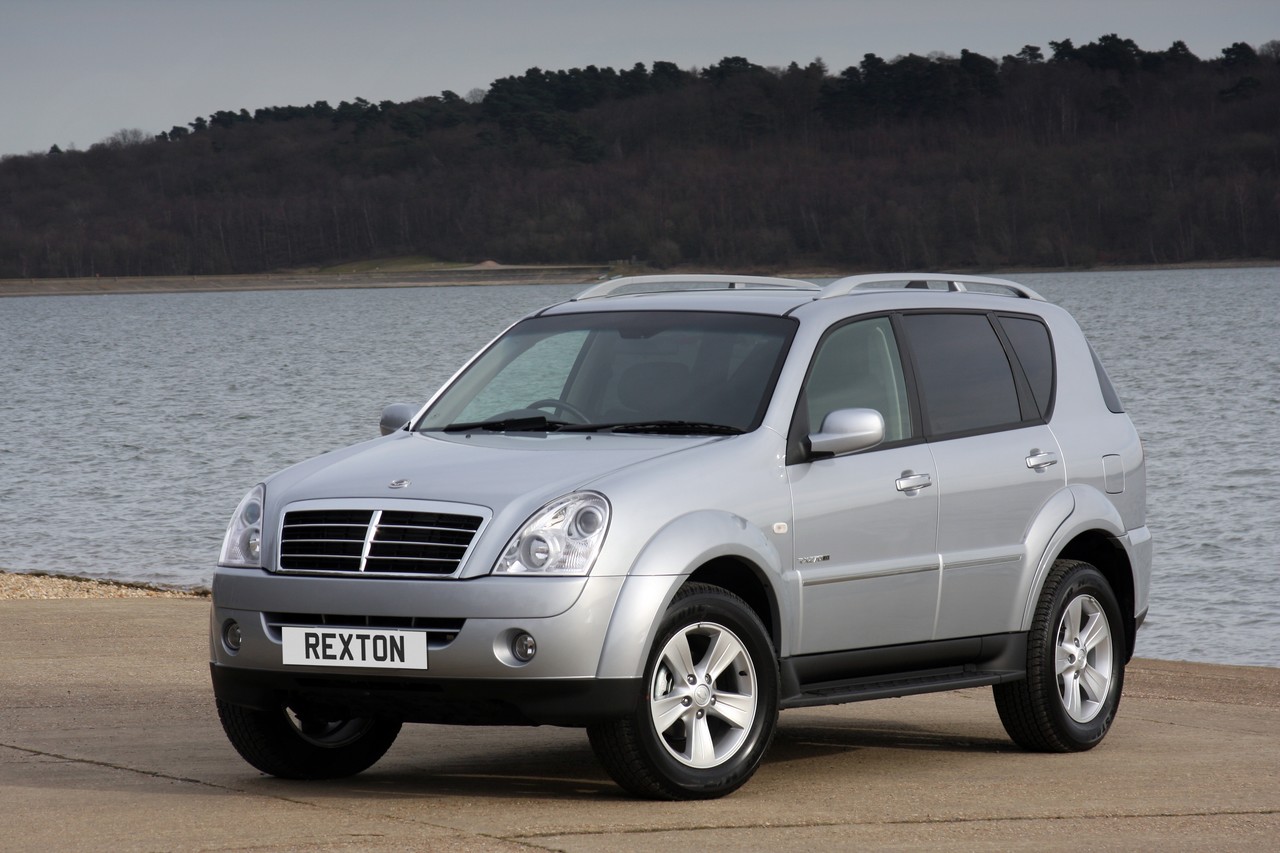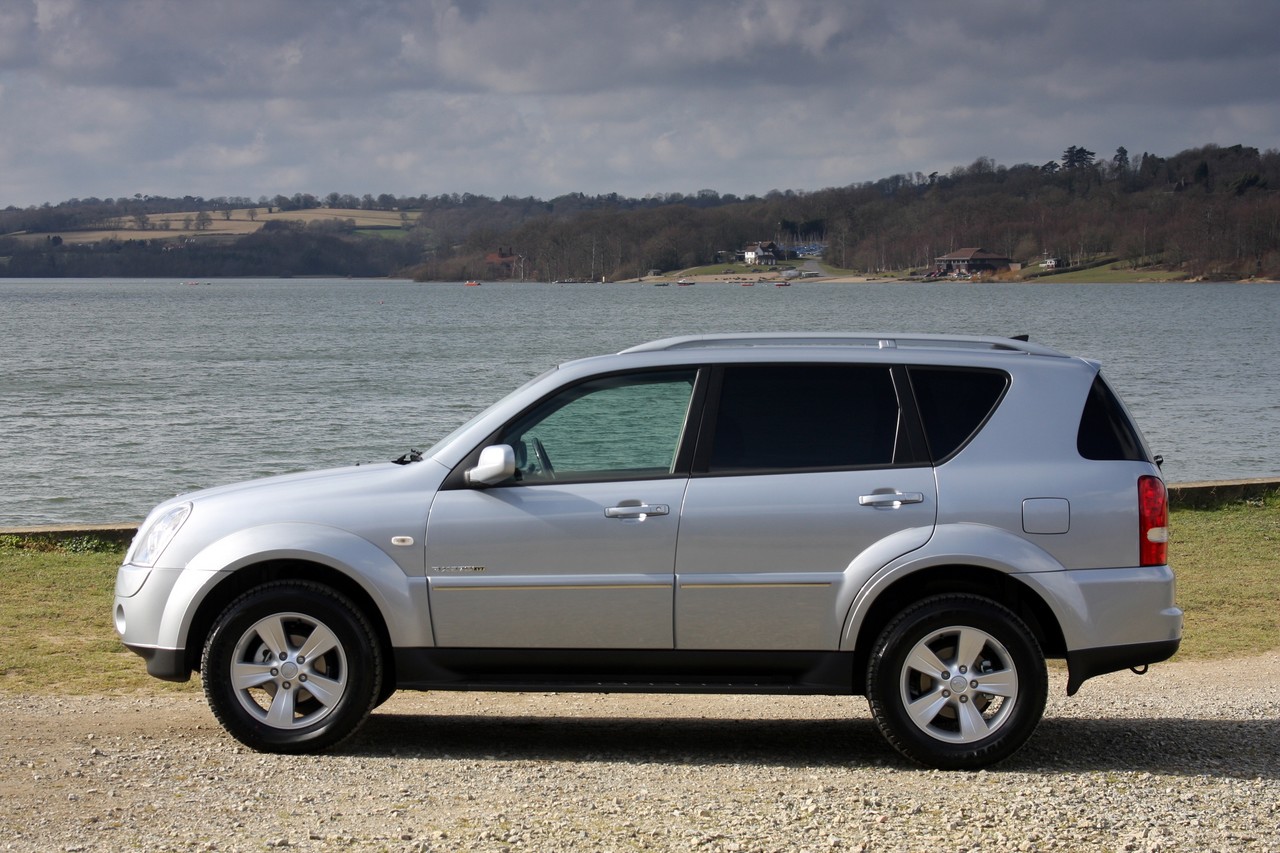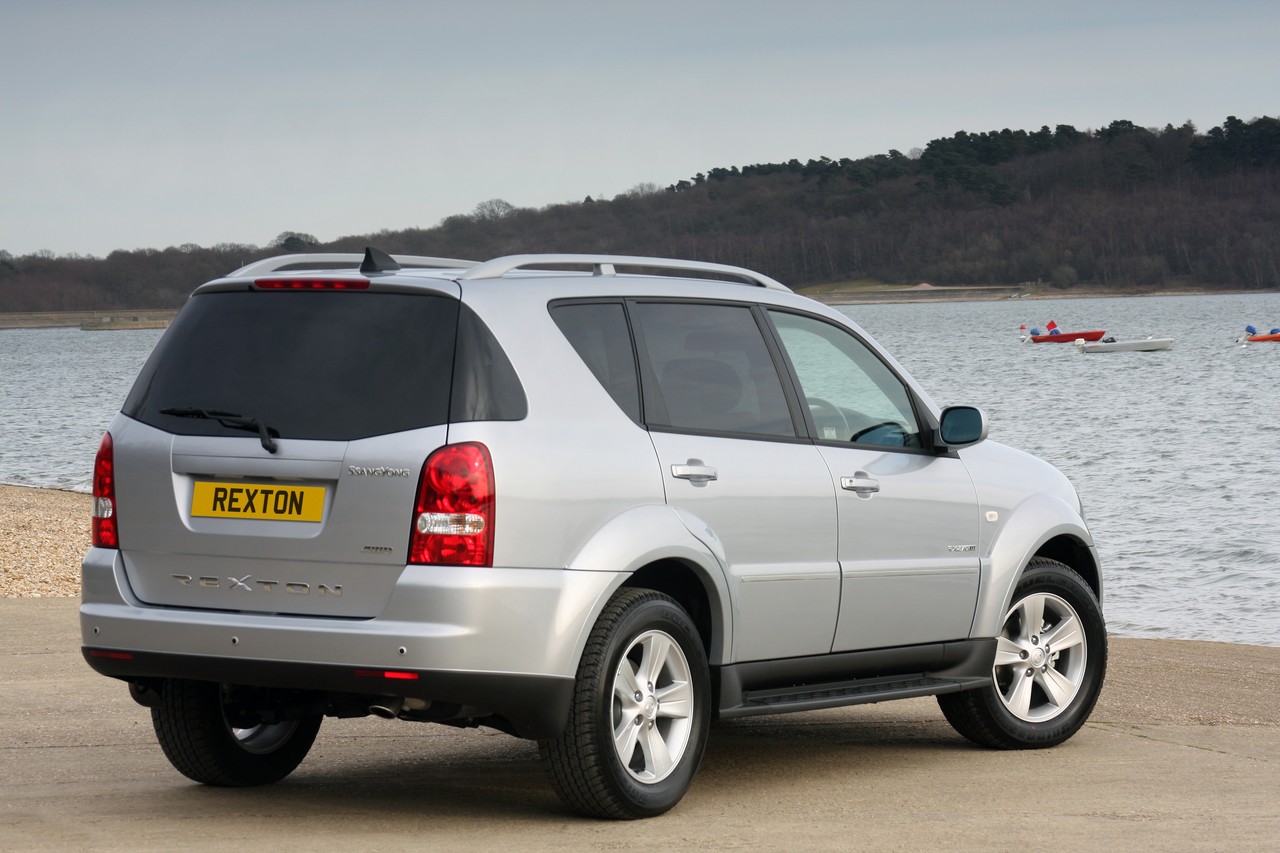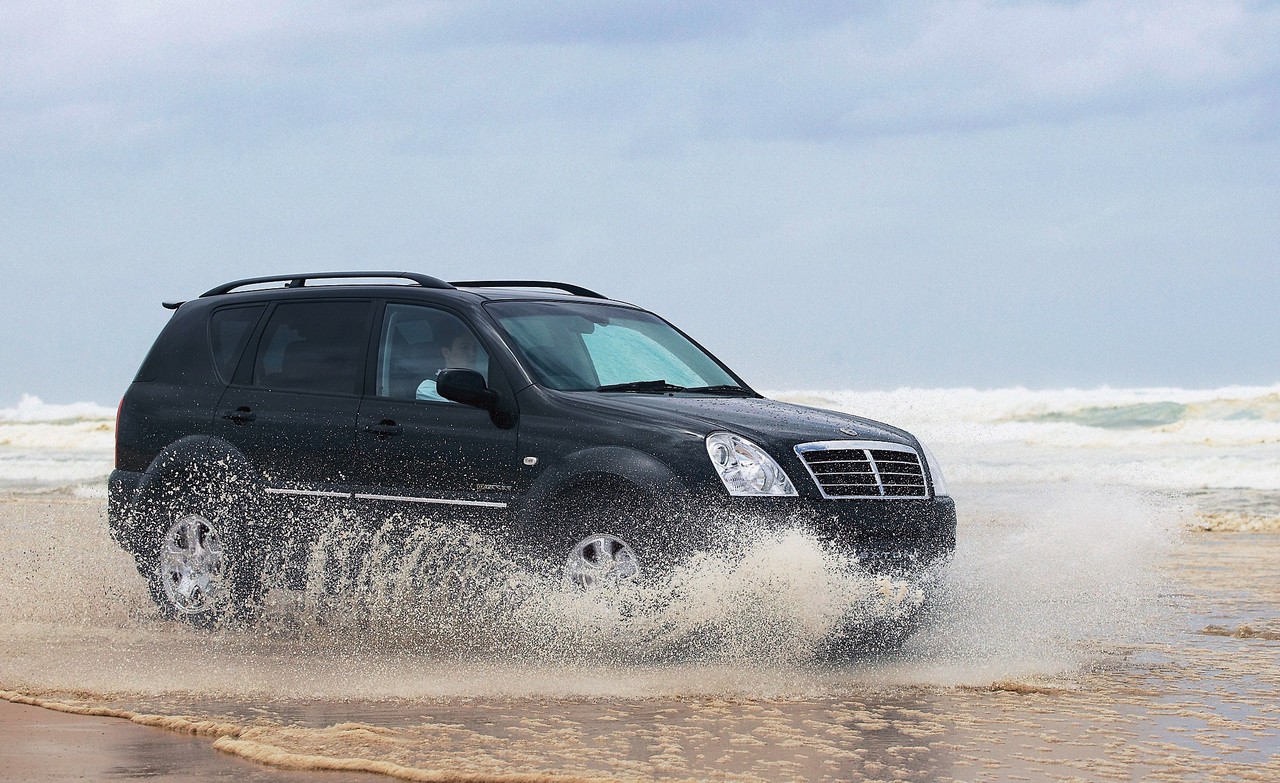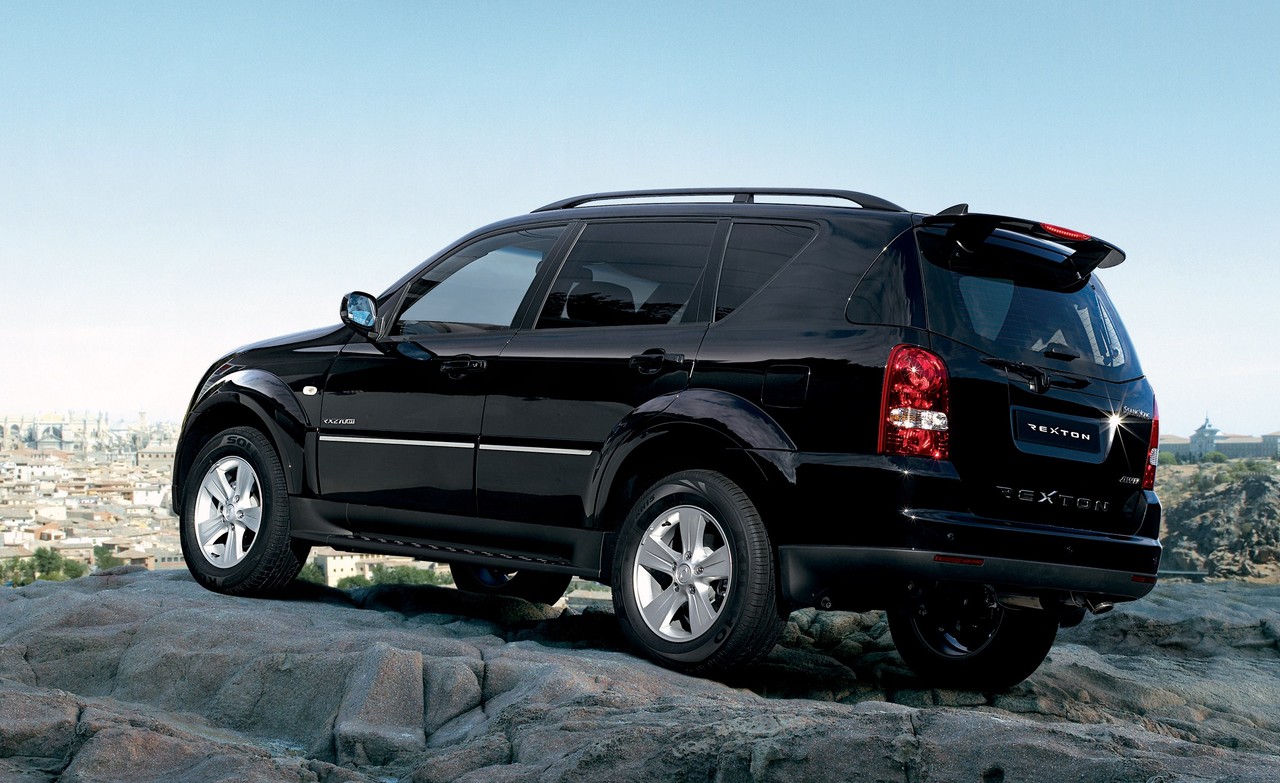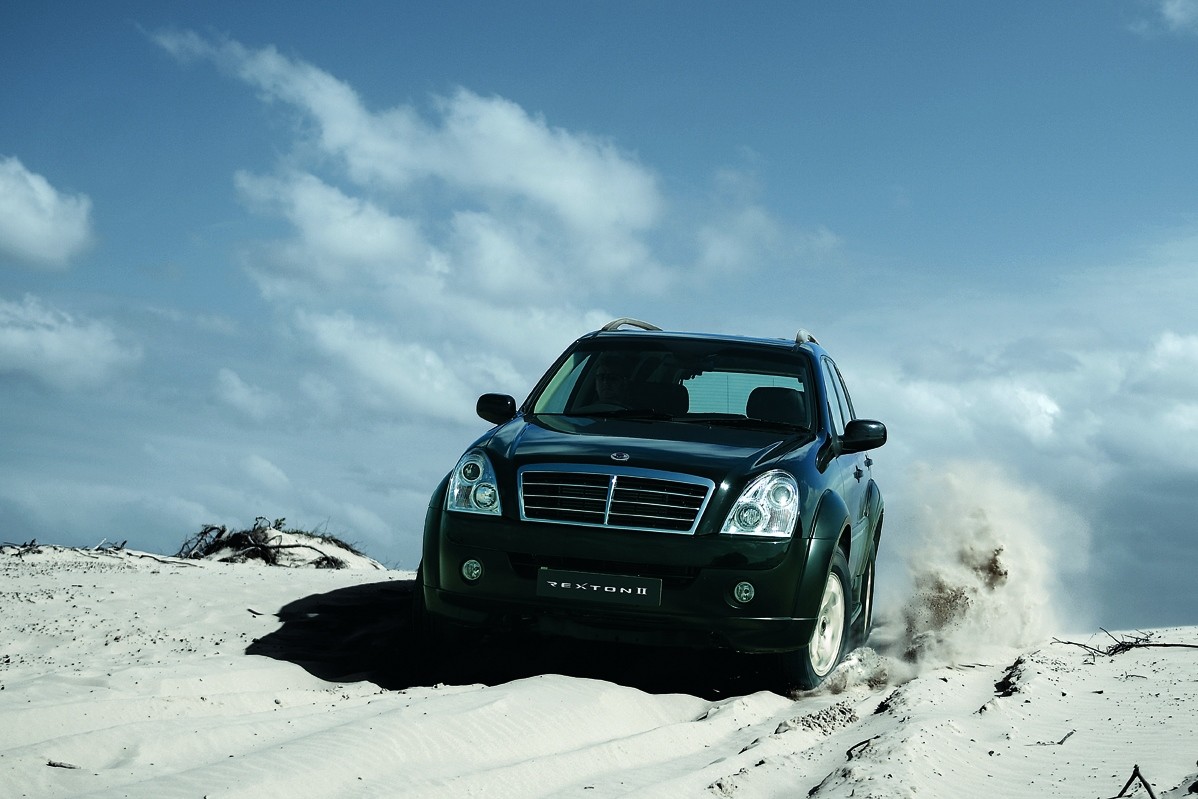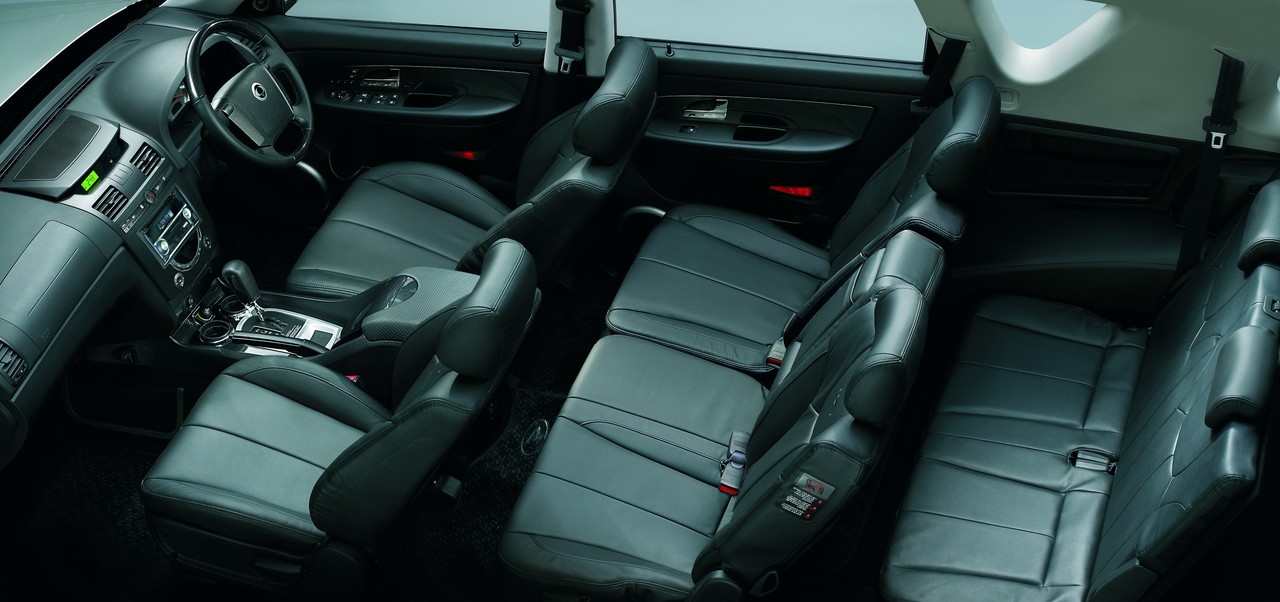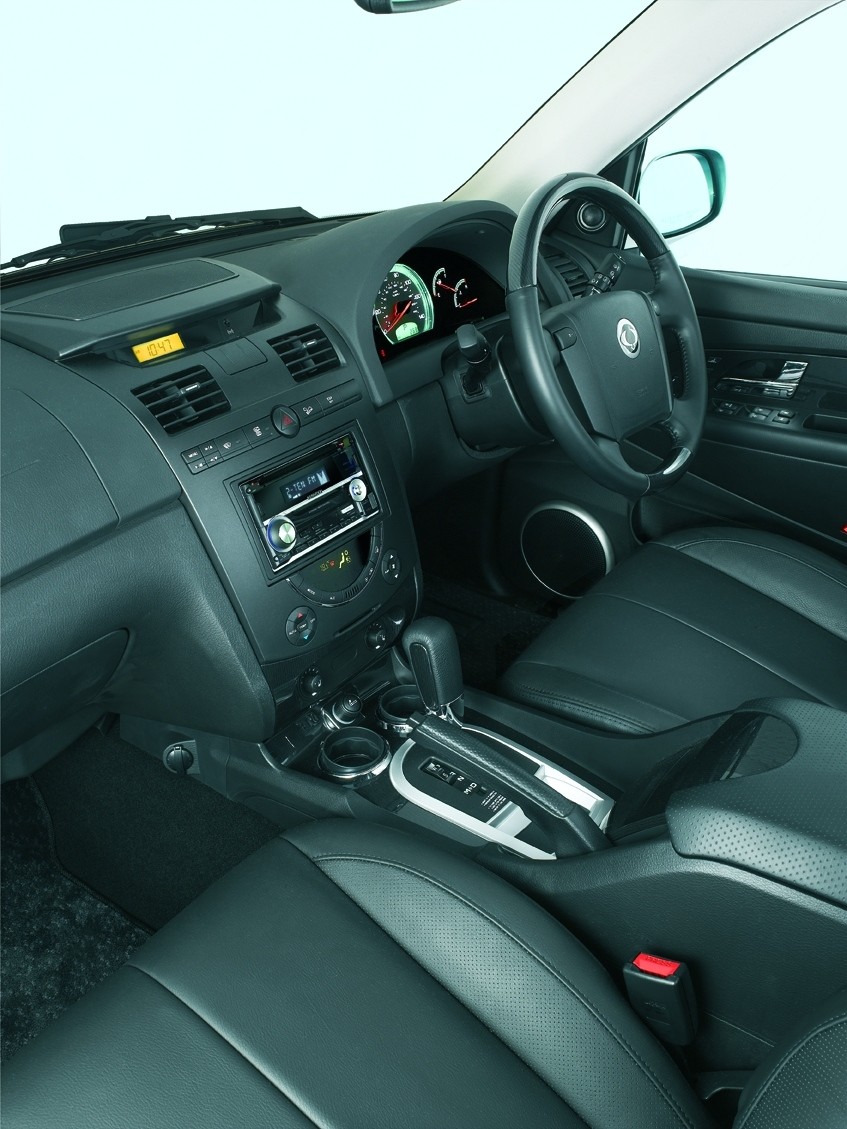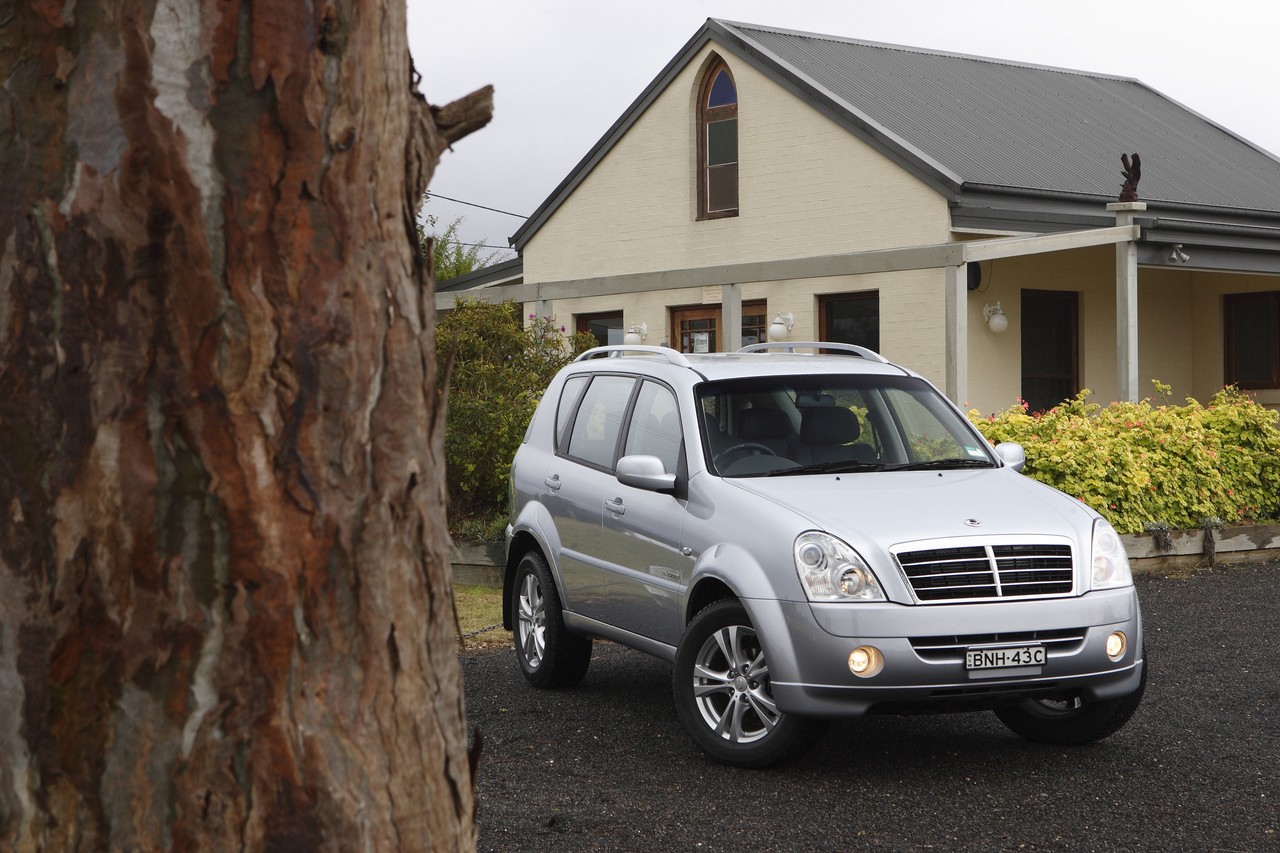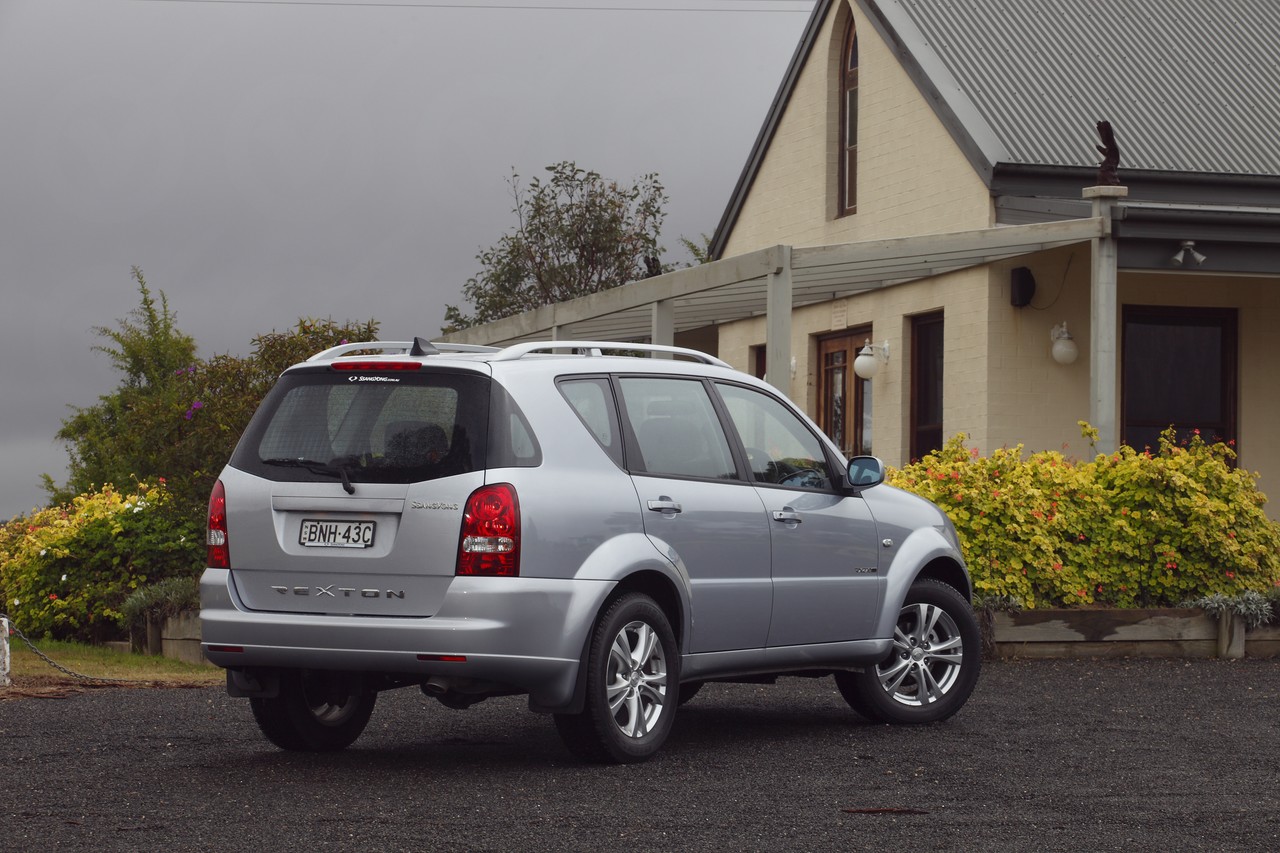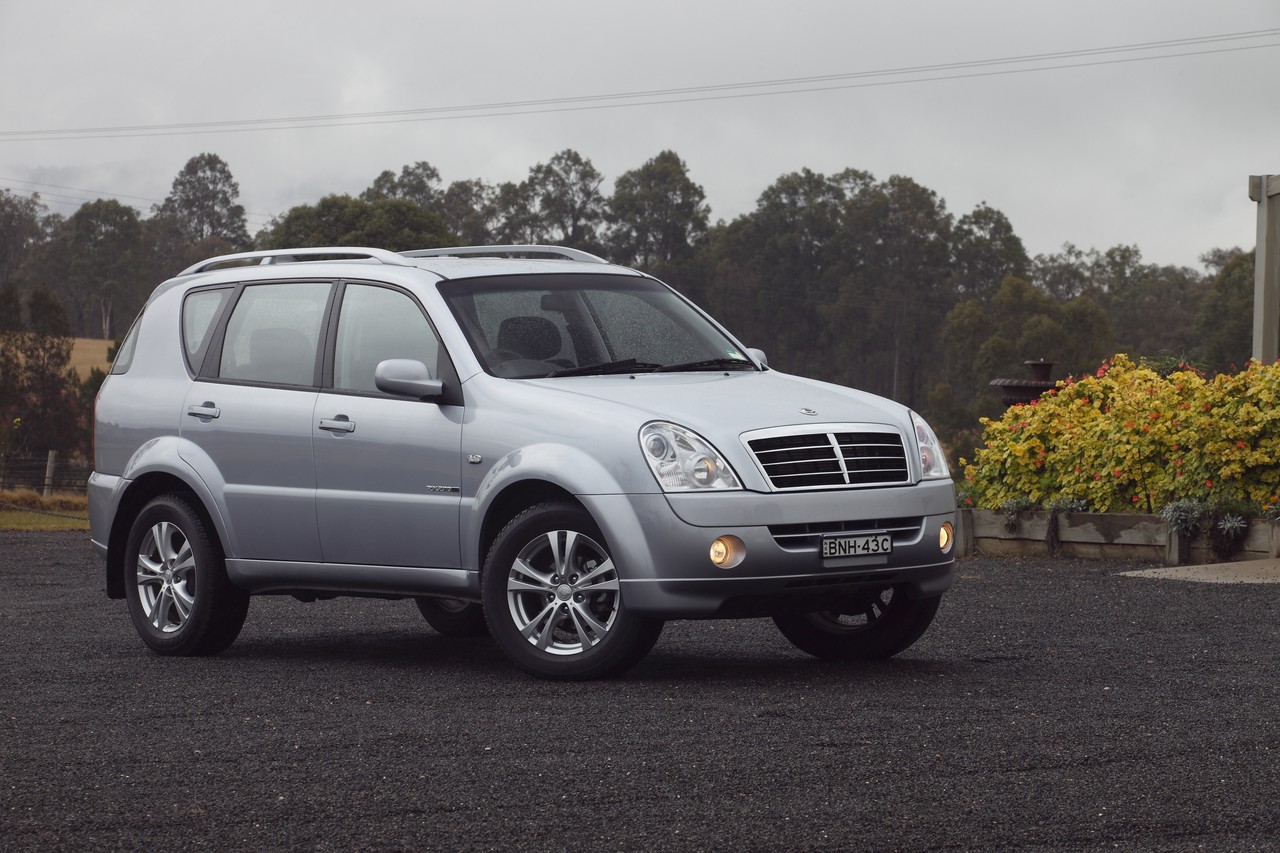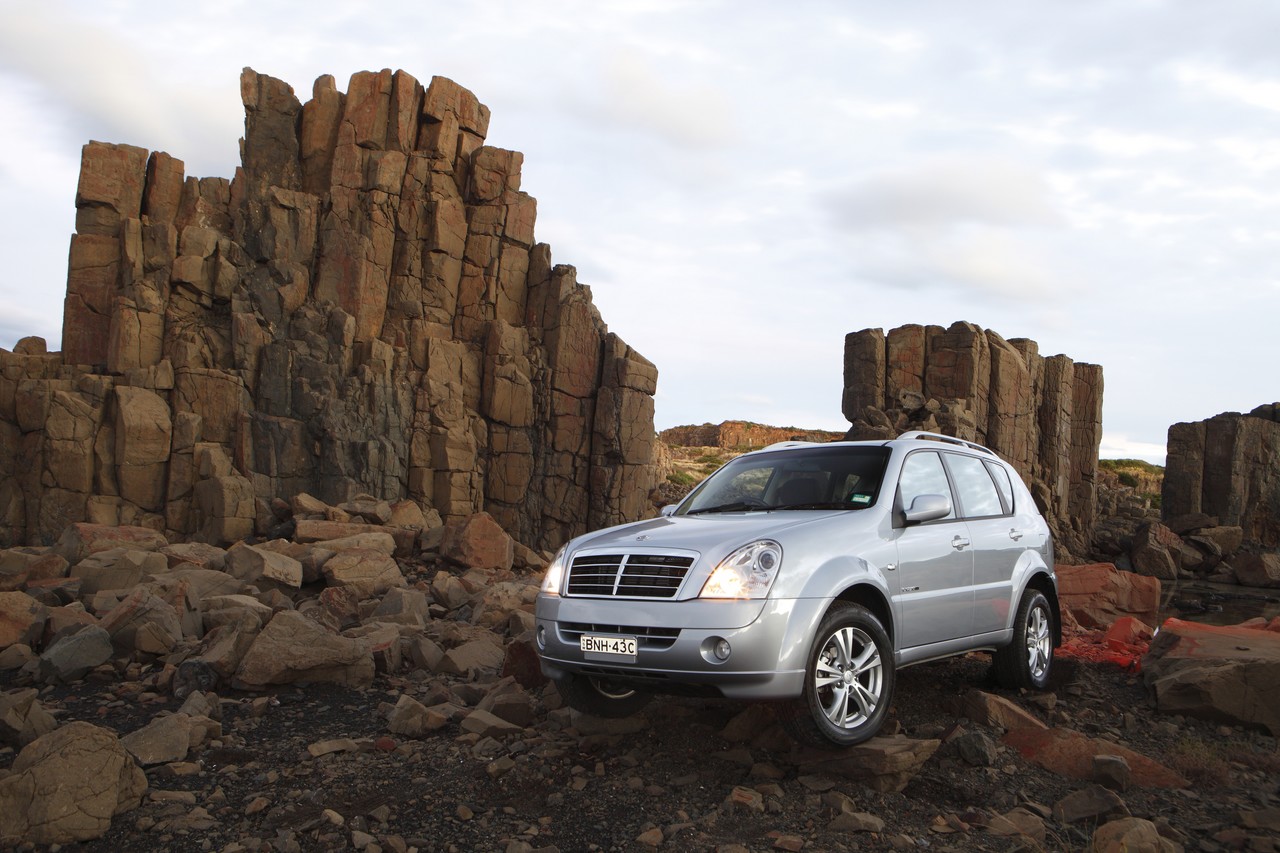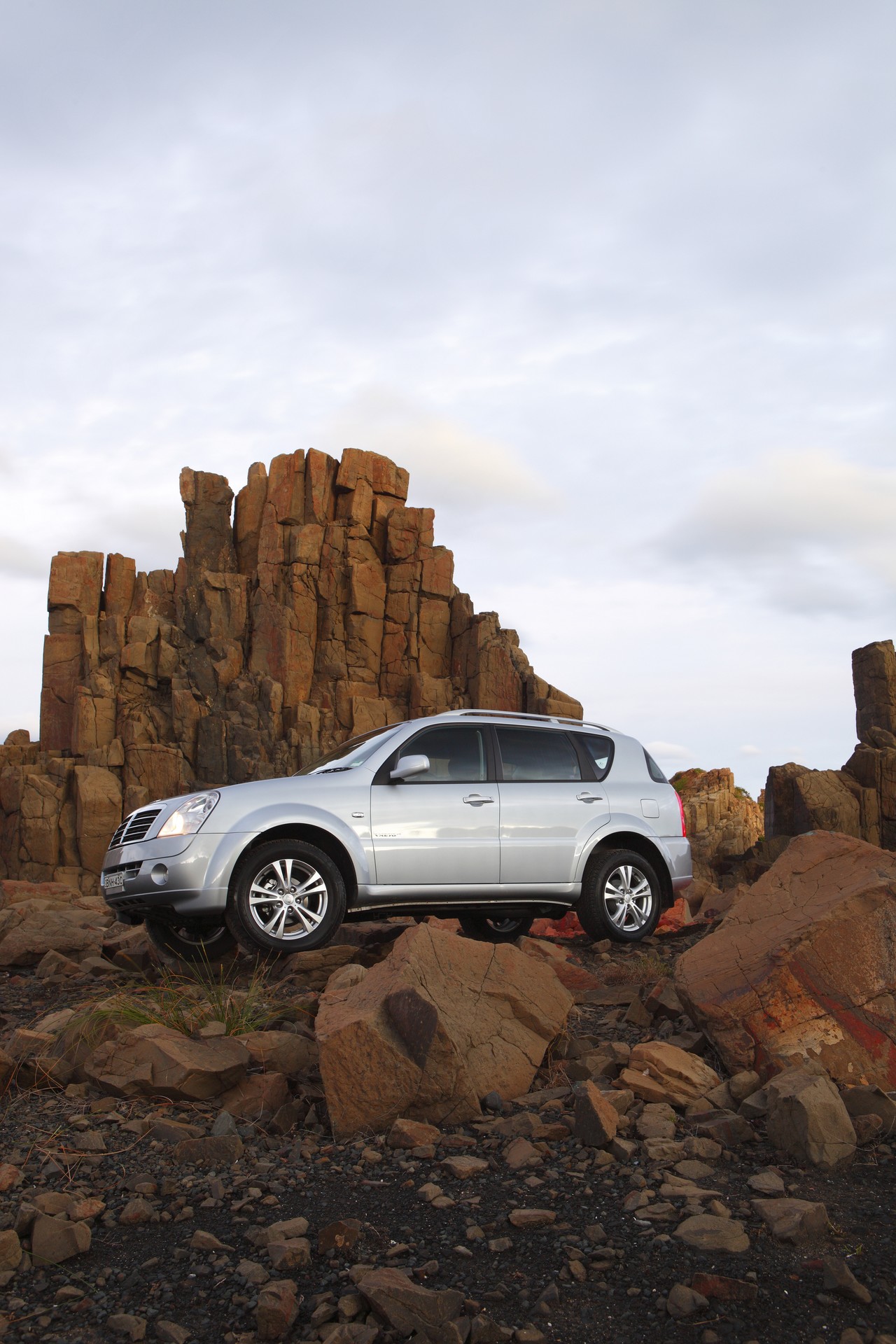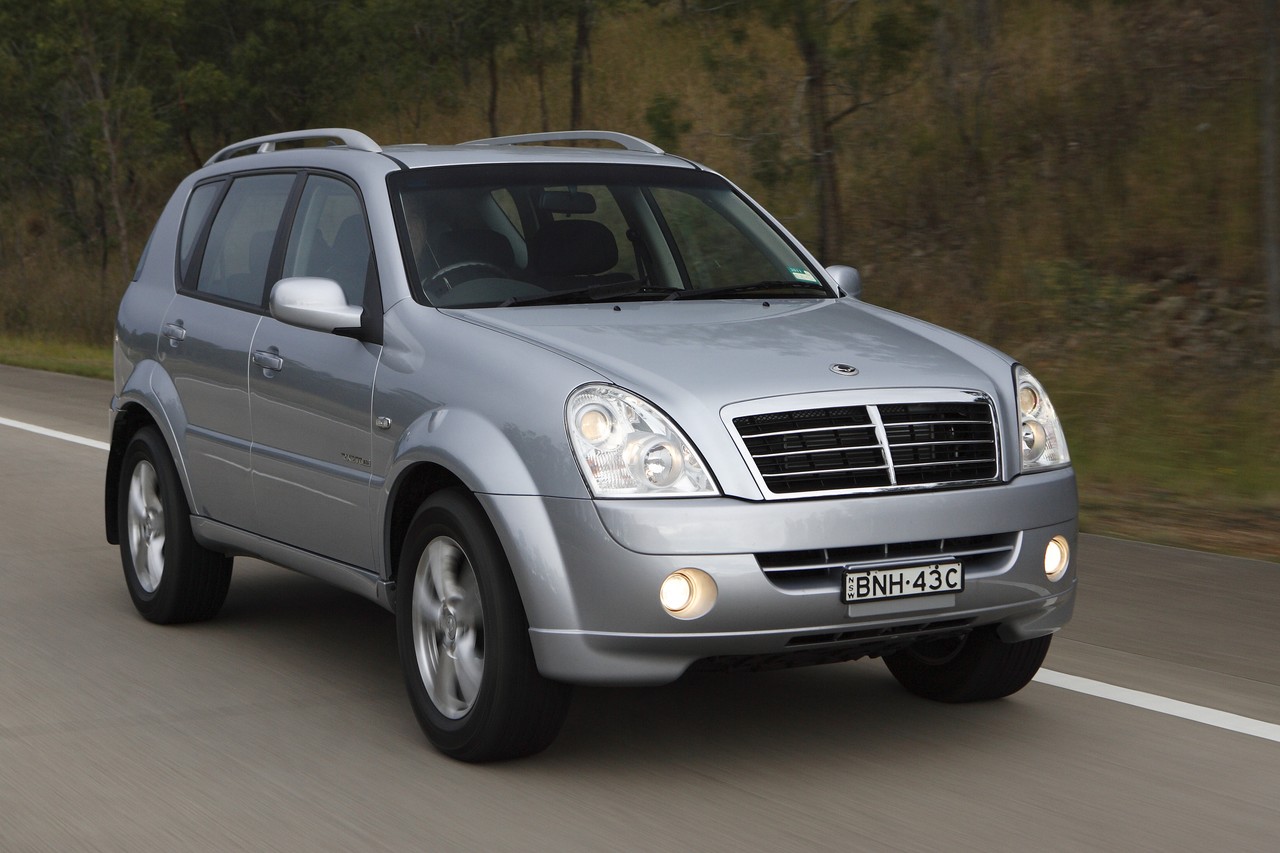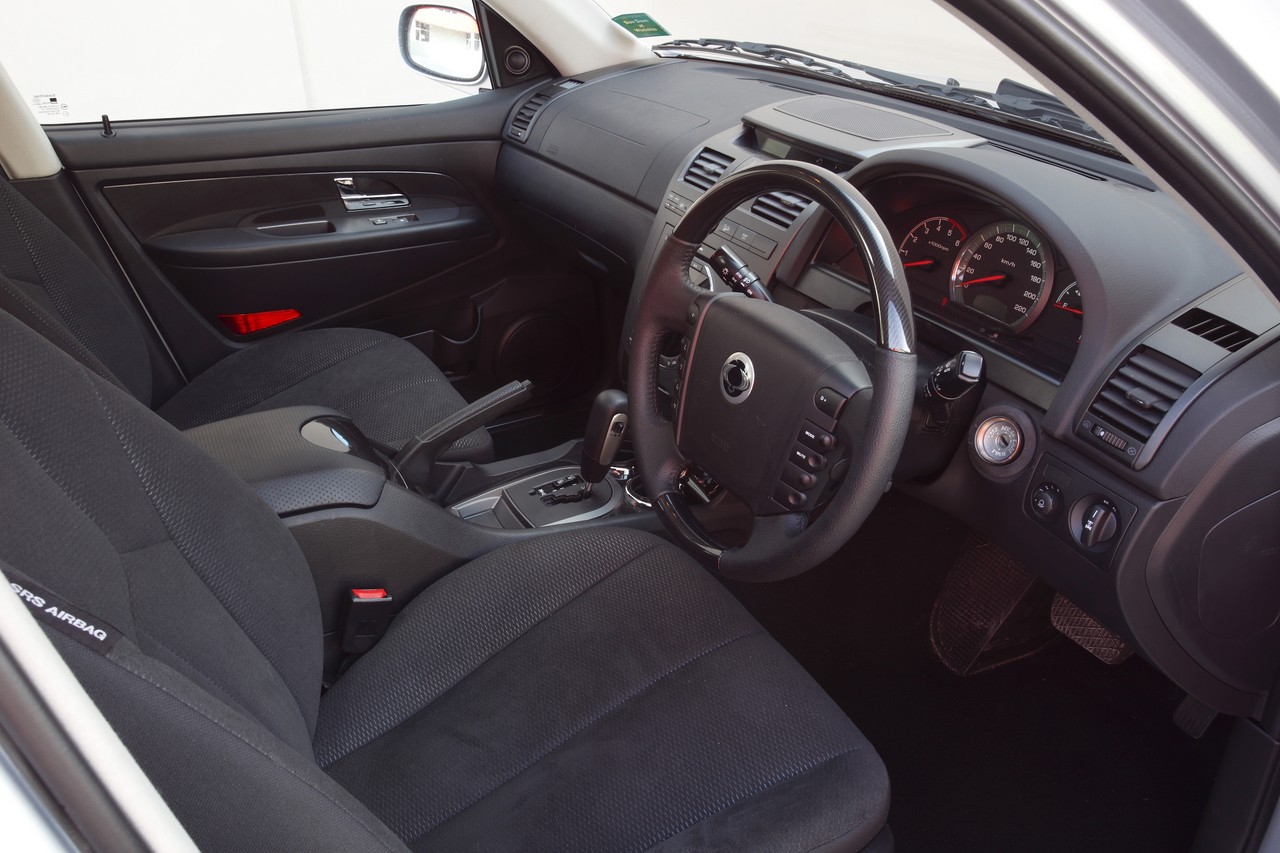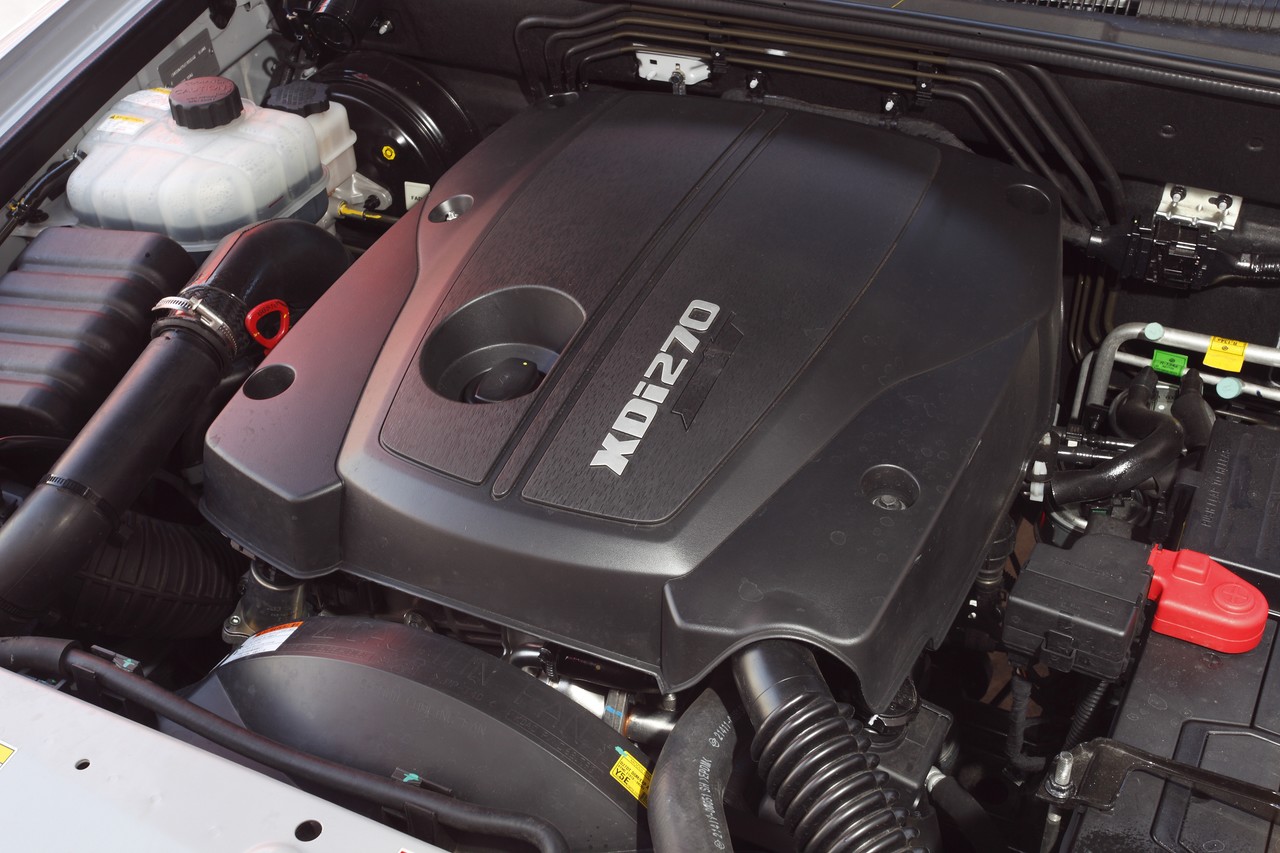
- Responsive 2.7-litre turbo-diesel engine
- Spacious interior
- Off-road capability
- Suspension lacks bump absorption and body control
- Intrusive engine noise
- Five-speed automatic transmission slow to kickdown
- Interior rattles
Review: Ssangyong Mk.2-I Rexton (2006-08)
Overview
Released in September 2006, the Ssangyong Mk.2 Series I (Mk.2-I) Rexton was a large SUV. Manufactured in Pyeongtaek, South Korea, the Rexton RX270 was powered by a 2.7-litre turbo-diesel engine that was mated to either a five-speed manual or automatic transmission. As per the table below, the RX270 was available in Sports and Limited editions.
Initially, the Mk.2-I Rexton had a ‘Torque on Demand’ all-wheel drive system (described below), double wishbone front suspension and a live rear axle. From February 2007, however, the Limited edition had a permanent four-wheel drive system and independent rear suspension.
OM647 engine
PProduced under licence from Mercedes-Benz, the 2.7-litre OM647 five-cylinder turbo-diesel engine had a cast iron block, common-rail injection, double overhead camshafts, four valves per cylinder and a compression ratio of 18.0:1. From February 2007, however, a more powerful version of this engine was available – for Limited editions – which had a variable geometry turbocharger (VGT).
Dimensions
The Mk.2 Rexton was 4720 mm long, 1870 mm wide, 1830 mm tall and had a 2820 mm long wheelbase.
| Variant | Engine | Edition | Trans. | Drive | Years | Peak power | Peak torque |
|---|---|---|---|---|---|---|---|
| RX270 | 2.7-litre turbo-diesel I5 | Sports | 5sp man., 5sp auto |
AWD | 2006-08 | 121 kW at 4000 rpm | 340 Nm at 1800-3200 rpm |
| Limited | 5sp auto | AWD | 2006-07 | ||||
| Limited | 5sp auto | 4WD | 2007-08 | 137 kW at 4000 rpm | 390 Nm at 1600 rpm |
AWD and 4WD systems
For models with the 121 kW turbo-diesel engine, the Mk.2 Rexton had a ‘Torque on Demand’ (TOD) electronic torque management system that controlled the distribution of power according to driving conditions. In normal conditions, the TOD system directed torque to the rear wheels only for maximum fuel efficiency. If rear wheel slippage was detected, however, the TOD system would operate to transfer torque to the front wheels.
The Limited edition with the 137 kW turbo-diesel engine had a permanent four wheel drive (4WD) system. As such, the engine’s torque was distributed constantly to all four wheels. If wheel slippage was detected, torque would be immediately transferred through the electronic stability control (ESC) system to the wheels with traction.
Safety equipment
Standard safety equipment for the Rexton RX270 included dual front airbags, ABS, electronic brake force distribution and front seatbelt pretensioners.
The RX270 Limited was further equipped with front seat-mounted side airbags, electronic stability control, traction control, rollover stability control and hill descent control.
Features
Standard features for the Rexton RX270 Sport included 18-inch alloy wheels, a six speaker sound system with CD player and 3.5 mm auxiliary input, dual-zone climate control air conditioning, cruise control, front fog lamps, split and folding rear seats, remote central locking, split and folding rear seats, power windows and heated mirrors, heated and retracting door mirrors, a 12 volt power socket, courtesy lights, rear cargo blind, side steps, roof rails, an alarm and immobiliser. Models with automatic transmissions were also fitted with cruise control.
The Rexton RX270 Limited added leather seats, power adjustable and heated front seats, automatic headlights, rain-sensing wipers, driver memory settings (for the seat and mirrors), an anti-glare rear view mirror and steering wheel gearshift buttons.
Review: Ssangyong Mk.2-II Rexton (2008-12)
Overview
Released in February 2008, the Mk.2 Series II (Mk.2-II) Rexton introduced a revised range, Euro IV emissions compliant engines, improved safety equipment and lower retail prices. The Sports edition was discontinued, leaving the entry-level Rexton as simply the RX270; the Limited was also replaced by the XVT SPR.
Visually, the Mk.2-II Rexton could be identified by its revised bonnet, grille and headlights. Inside, there were minor trim changes.
| Variant | Edition | Drive | Engine | Trans. | Peak power | Peak torque |
|---|---|---|---|---|---|---|
| RX270 | N/A | AWD | 2.7-litre turbo-diesel I5 | 5sp man., 5sp auto |
121 kW at 4000 rpm | 340 Nm at 1800-3200 rpm |
| XVT SPR | Permanent 4WD |
2.7-litre turbo-diesel I5 | 5sp auto | 137 kW at 4000 rpm | 402 Nm at 1600 rpm |
Safety equipment
Standard safety equipment for the Mk.2-II Rexton was improved as all models were fitted with front side airbags, brake assist, electronic stability control, traction control, rollover stability control and hill descent control.
Features
Compared to the Mk.2-I Rexton Sports, the entry-level Mk.2-II Rexton was fitted with 16-inch alloy wheels (previously 18-inch wheels) and a leather-wrapped steering wheel.
Compared to the Mk.2-I RX270 Limited, the Rexton XVT SPR gained rear parking sensors and rain-sensing wipers. From May 2010, the Rexton XVT SPR was fitted with front parking sensors and a power-operated sunroof as standard.
Related links
